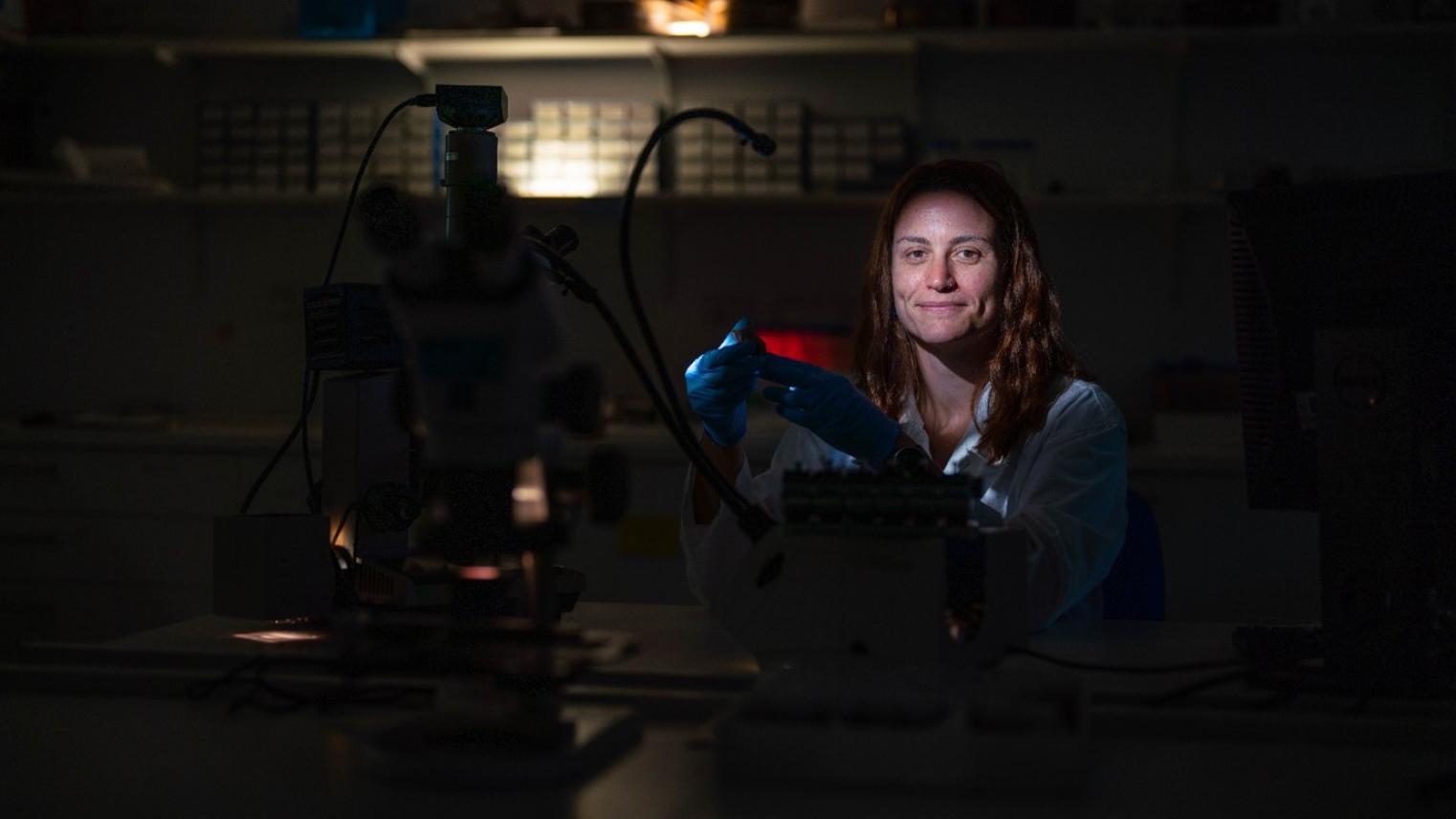Digging Divas
Recently, on International Women’s Day 2024, the Australian Academy of the Humanities showcased “Ten women in archaeology you should know about.”
And it’s no surprise that among the Top 10 are two remarkable ladies who make no bones about their passion for the profession! Both Senior Research Fellow Dr Sofia Samper Carro and Dr Shimona Kealy from Archaeology and Natural History (ANH) at the ANU School of Culture, History & Language (CHL) truly dig archaeology and all things related.
Meet Sofia and Shimona, CHL’s very own digging divas!

Dr Sofia Samper Carro
Her passion for dinosaurs and later a brush with Egyptology eventually led Sofia on to the path of archaeology. Sofia is a zooarchaeologist (she studies animal bones) and a taphonomist (she studies what happened to those bones before, during and after they were buried). She is passionate about Neanderthals and exploring new lines of research. She is curious and motivated by learning and discovering new techniques that can improve our interpretations of archaeological material—in her case, animal bones. As such, she has been developing a new, exciting line of research at ANU--the study of ancient bone proteomics, which she will keep exploring through her ARC DECRA.
Sofia’s ARC DECRA focuses on the Neanderthal diet to evaluate the potential causes for their extinction. This will generate more knowledge about Neanderthal lifestyle and behaviour which will help us to understand our closest relatives and potentially, might have implications to understand how our own species survived in the past. For her research, she will look at small ‘critters’ that may have been eaten by Neanderthal or appear in the site accidentally, such as rabbits, turtles and birds. Additionally, she will use ancient bone protein analysis to learn more about the small bone fragments she usually finds in Neanderthal site, which are over 300,000 tiny bones in some cases! This journey with ancient animal protein is going to be a fascinating one to watch as it unfolds—we are talking about some bones that are at least 80,000 years old in this project, and being able to get protein and data from these bones is going to be a great achievement.

What makes Sofia the researcher she is? She’s inquisitive and questions everything, and she likes to find ways to answer these questions through her research.
For Sofia, archaeology is so much more than the laboratory; she encourages archaeologists to leave their labs and interact with teachers and instructors to create themes and activities that foster a passion for learning about prehistory in young people. In the next few weeks, she is running a workshop for ACT history teachers to explore innovative ways to bring archaeology and Deep History into primary and secondary schools.
Part of Sofia’s ARC DECRA project also entails creating a graphic novel and resources for ACT school teachers. So, a lot of exciting things are expected from this project, and we will be sure to travel with Sofia on this pathway to discovery!

Dr Shimona Kealy
Meanwhile, archaeologist and palaeobiologist Dr Shimona Kealy has a keen interest in the early movements of people, cultures, and animals throughout the islands of the Asia-Pacific. In particular, she focuses on the patterns of occupation and cultures in island communities over the last ~50,000 years in Wallacea, and the biological and ecological impacts of early human arrival on islands.
Shimona completed her PhD at ANU in 2019. Her thesis investigated how the ancestors of Australia’s Indigenous peoples travelled from mainland Southeast Asia, through the islands of eastern Indonesia and Timor-Leste, to Australia and New Guinea. As these islands between the continental landmasses were always separated by water, and based on the archaeological dates for occupation of Australia, this also involved modelling the very first sea crossing of our species. Shimona’s PhD was mostly centred on modelling and reconstructing this palaeo-seascape, but she also spent about a year conducting various archaeological and palaeontological surveys and excavations in Indonesia and Timor-Leste.
Shimona recently ran a National Geographic-funded archaeology field school in Indonesia, where she took a group of lucky students with her to excavate a newly discovered site on Lombok Island. Students from ANU as well as the Indonesian Gadjah Mada University together learnt how to conduct best-practice prehistoric archaeological excavation in a cave site, continuing the great ANU tradition of research collaborations with our Asian neighbours. Shimona has also successfully received DP funding from the ARC, alongside CIs Sue O’Connor and Sofia Samper Carro, which will enable her to continue her exciting fieldwork adventures in Indonesia, this time to the remote island of Wetar, on the hunt for obsidian trade networks.

What makes Shimona the researcher she is? She loves to be creative in her research approach, particularly the application of unique multidisciplinary investigations of traditional questions, and in the development of course material and practical laboratory exercises. Shimona spearheads courses such as rock art intensives and maps and mapping as well as the field school in Indonesia. She enjoys thinking outside the box to develop alternative course materials to benefit students in their long-term learning experience and engagement.

Be it bones, sediments, or rock, there is very little that stumps this dynamic duo, especially when they’re out and about, excavating history! Go, girls!